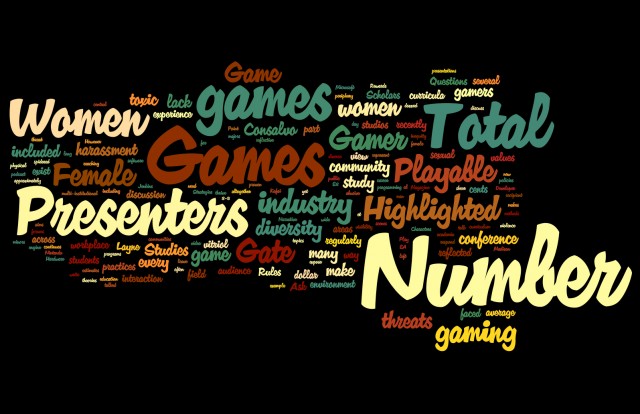Disclaimer: There will be heavy spoilers in this article regarding the nature and content of Doki Doki Literature Club! If you have any interest in the game, I would recommend checking it out before reading this article; however, please refer to the warning list beforehand and play at your own discretion.
On September 22nd, 2017, Team Salvato released a free visual novel called Doki Doki Literature Club! It features what looks to be four fairly standard anime style girls all fighting for the affection of one boy, who is, you guessed it, your character. The entire game takes place in a high school Literature Club where you spend your days writing poems for the girl you wish to pursue until she eventually falls for you. Sounds like a pretty stereotypical dating sim, right? Until a look at the Steam description page shows you that the number one tag on the game is “psychological horror.” If that doesn’t pique your interest enough, upon first startup of the game you must confirm you are over 13 and give your consent to play the game, and an additional URL to a website listing all the necessary disclaimers is also shown before the main menu screen even shows up. Every startup after this will also open with the disclaimer: “This game is not suitable for children or those who are easily disturbed.”
There are two reasons for these disclaimers, the first being the nature of the game and the gameplay itself, and the second being the various controversial topics that appear throughout the game. This article is going to focus on the first reason, while my next article will be about the second reason. As for the gameplay aspect, Team Salvato has created an experience that lies in a niche and highly unique genre.
Doki Doki Literature Club! is, at its core, a metafictional game.
Metafiction, also sometimes referred to as “breaking the fourth wall”, is generally defined as “fiction in which the author self-consciously alludes to the artificiality or literariness of a work by parodying or departing from novelistic conventions and traditional narrative technique.” A common example of metafiction in literature is writing a narrator inside the novel itself, as if you are speaking to someone who is reciting the story you are currently reading. However, the concept of metafiction has also been present in video games for quite some time now; I remember back in the early 2000’s playing Sly Cooper and Bentley would tell Sly to “jump and hit the o button to walk along ropes.” Obviously, he was talking to me as the player; Sly wasn’t holding a controller with buttons on it. But in recent years the power of metafiction has expanded in games to the point where it’s not just a reference to an object or person in reality, but it goes so far as to challenge the very foundations of gaming conventions. Notable games of late that utilize metafiction in such a way are Pony Island, The Magic Circle, Undertale, and now DDLC!.
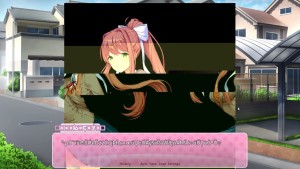 The main difference between DDLC! and the aforementioned games is that while they take strides in breaking standard game conventions, DDLC! takes it one step further by simultaneously manipulating files and scripts in the game directory during gameplay on top of unconventional in-game events. It is discovered through the course of the game that Monika, the club president, has become aware that she is a programmed character in a digital simulation, and that her reality is just a set of scripted events for you to walk through and participate in as the “main love interest.” She finds that her world and her friends become meaningless, and when your character shows up she sees through him to our reality and begins making strides to break herself out of the game in order to be with you. This can be seen both in and out of the game; as Monika begins messing with the game’s code, the visuals will begin glitching at random, pieces of the background audio will spontaneously fall in and out of tempo and pitch, temporarily reverse, or sometimes cut out entirely for a period of time. At certain points in the game she will also force a complete restart of the game, wiping all of your save data and requiring you to start over with new parameters in place after critical interactions with characters have occurred and parts of the game’s script have been irreversibly broken.
The main difference between DDLC! and the aforementioned games is that while they take strides in breaking standard game conventions, DDLC! takes it one step further by simultaneously manipulating files and scripts in the game directory during gameplay on top of unconventional in-game events. It is discovered through the course of the game that Monika, the club president, has become aware that she is a programmed character in a digital simulation, and that her reality is just a set of scripted events for you to walk through and participate in as the “main love interest.” She finds that her world and her friends become meaningless, and when your character shows up she sees through him to our reality and begins making strides to break herself out of the game in order to be with you. This can be seen both in and out of the game; as Monika begins messing with the game’s code, the visuals will begin glitching at random, pieces of the background audio will spontaneously fall in and out of tempo and pitch, temporarily reverse, or sometimes cut out entirely for a period of time. At certain points in the game she will also force a complete restart of the game, wiping all of your save data and requiring you to start over with new parameters in place after critical interactions with characters have occurred and parts of the game’s script have been irreversibly broken.
For players that have the game directory open while playing, there is an added layer of metafiction that takes place. After key interactions, various files will spontaneously show up in the main directory, including text documents, image files, and even an encrypted file that no default program can recognize. There is also a folder labelled “characters” in the directory, and over time Monika will forcefully delete these files, their subsequent 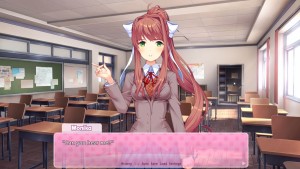 characters’ data will corrupt, and they will cease to exist in the game. Throughout all these events, both in the game and in the directory files, Monika will make attempts to speak through the main character directly to you, pleading with you to help her escape her false reality. She even speaks to you in the game’s description on Steam, which she then references near the end of the game, chastising you for not paying closer attention to her messages.
characters’ data will corrupt, and they will cease to exist in the game. Throughout all these events, both in the game and in the directory files, Monika will make attempts to speak through the main character directly to you, pleading with you to help her escape her false reality. She even speaks to you in the game’s description on Steam, which she then references near the end of the game, chastising you for not paying closer attention to her messages.
While DDLC!’s heart lies in metafiction gaming, the directory files also serve as another form of interactive media known as hypertext fiction. In Janet Murray’s book, Hamlet on the Holodeck, she writes about the birth of hypertext fiction, in which digital mediums can connect various pieces of information known as “lexias” through links. These links often lead readers to a related, but completely independent written work or chunk of information, which can itself lead to a new independent chunk of information, and so on. What is probably the most well-known form of hypertext fiction today is hyperlinks on the Internet; it is almost impossible at this point to find a web page that does not have at least one hyperlink leading somewhere else. However, hypertext fiction can extend out to other digital forms of media, including games, and DDLC! employs some incredibly unique forms of hypertext fiction both in the game itself as well as its directory files.
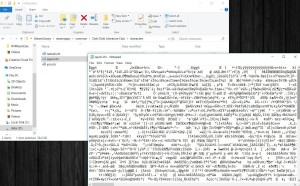 Unlike more standard links that you might encounter when browsing the web, DDLC! has a lot of links hidden inside encrypted files. It was discovered by several tech savvy players that each of the four character files can be converted into a different file type; for instance, Yuri’s character file is a long string of Base64 characters which, when converted, read as an excerpt from a short creepypasta story posted anonymously exactly two years before the release date of DDLC!. After this was discovered, Dan Salvato (lead developer for Team Salvato) confirmed that it was in fact his story that he had posted in secret. One of the other more interesting files is Sayori’s character file, which requires several steps of conversion starting with an audio file and ending with a QR code that leads to a website called “projectlibitina.” There are several other files containing similar hidden easter eggs, some of which may even be hints to Team Salvato’s future game which could release as soon as this year. For those who are interested, a comprehensive list of all the discovered files can be viewed both on Reddit and YouTube.
Unlike more standard links that you might encounter when browsing the web, DDLC! has a lot of links hidden inside encrypted files. It was discovered by several tech savvy players that each of the four character files can be converted into a different file type; for instance, Yuri’s character file is a long string of Base64 characters which, when converted, read as an excerpt from a short creepypasta story posted anonymously exactly two years before the release date of DDLC!. After this was discovered, Dan Salvato (lead developer for Team Salvato) confirmed that it was in fact his story that he had posted in secret. One of the other more interesting files is Sayori’s character file, which requires several steps of conversion starting with an audio file and ending with a QR code that leads to a website called “projectlibitina.” There are several other files containing similar hidden easter eggs, some of which may even be hints to Team Salvato’s future game which could release as soon as this year. For those who are interested, a comprehensive list of all the discovered files can be viewed both on Reddit and YouTube.
On a more entertaining note, Monika may also randomly tell you her twitter handle at the end of the game, lilmonix3, which is actually a real twitter account under her name that has been in existence since February 2017, several months before anyone even knew about DDLC! It still has consistent posts added to it to this day.
Doki Doki Literature Club! is not the first game to employ metafiction and hypertext fiction tactics like these, but it is one of the few games to utilize them to such an intricate degree. The number of hidden Easter eggs in both the game directory and in-game events is staggering, especially considering it was produced in its entirety in less than two years with only three developers; not only that, but the possibility that some of these easter eggs may refer directly to Team Salvato’s next title is incredibly clever hidden marketing. It is always great to see more unconventional games garner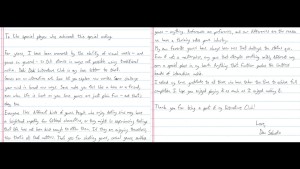 such strong recognition from the gaming community, as it opens up the floor for more developers to take similar risks and create more meta games of a similar or higher caliber. Here’s hoping we see more games in the future breaking the formulaic gaming conventions we have grown so complacent to.
such strong recognition from the gaming community, as it opens up the floor for more developers to take similar risks and create more meta games of a similar or higher caliber. Here’s hoping we see more games in the future breaking the formulaic gaming conventions we have grown so complacent to.




